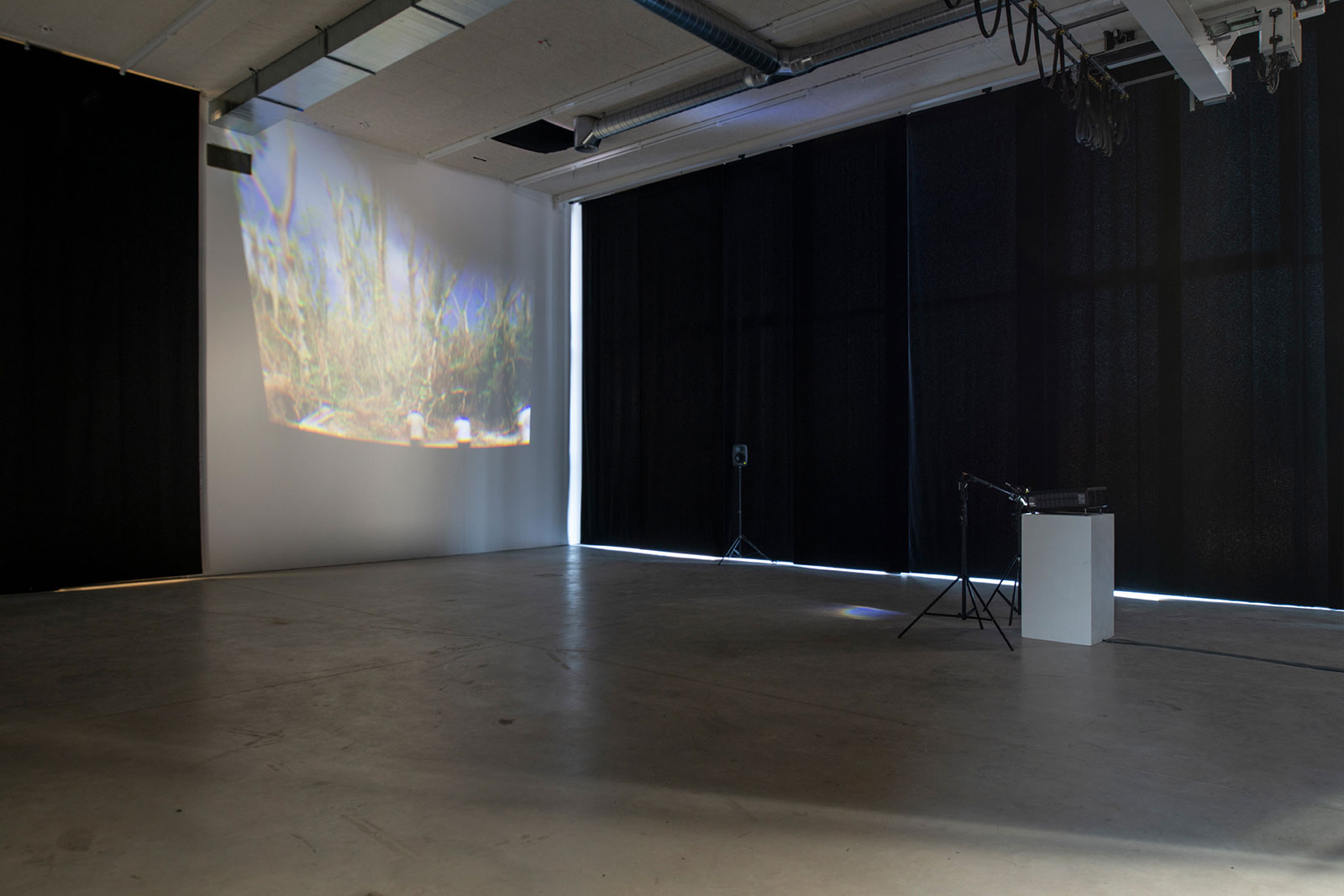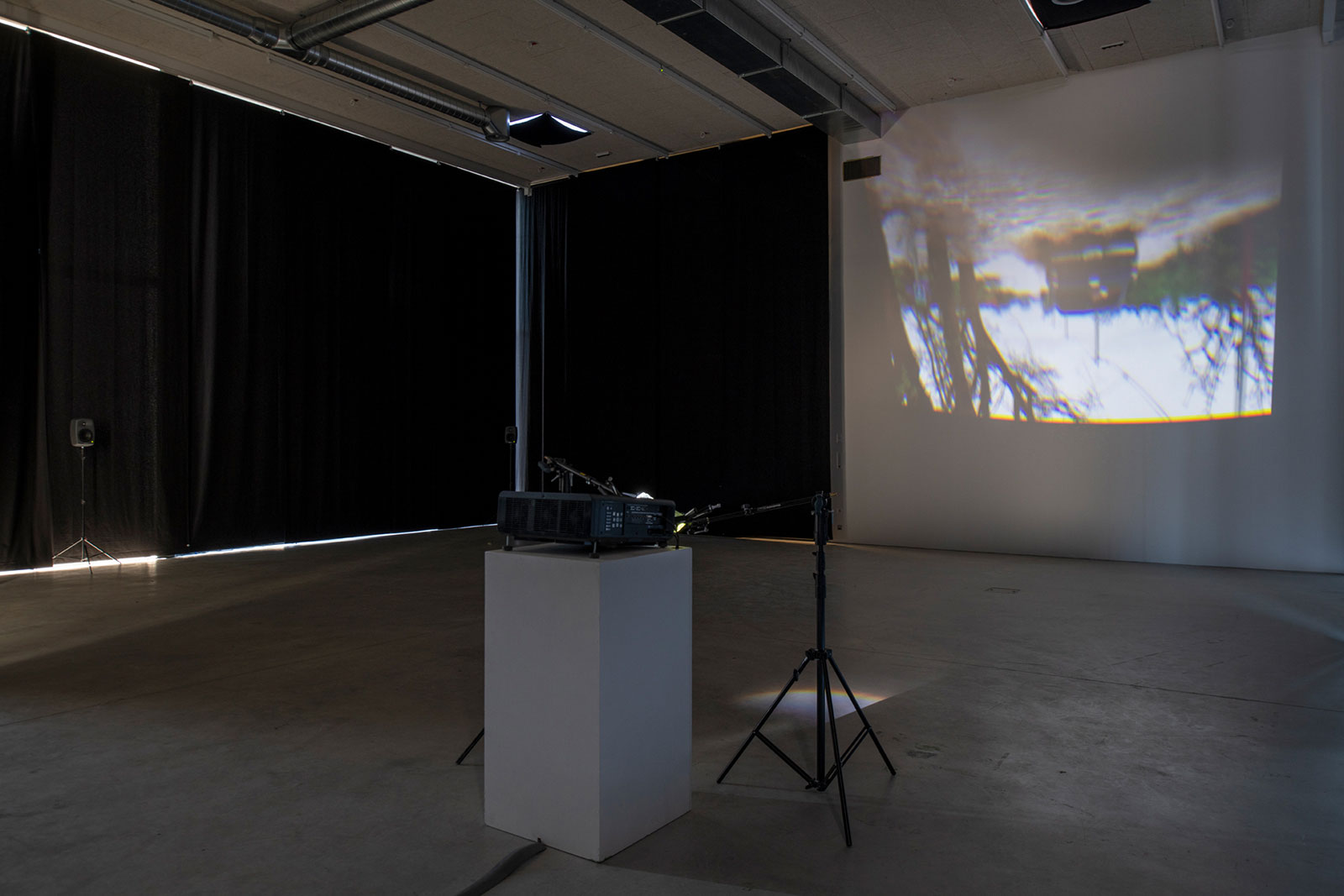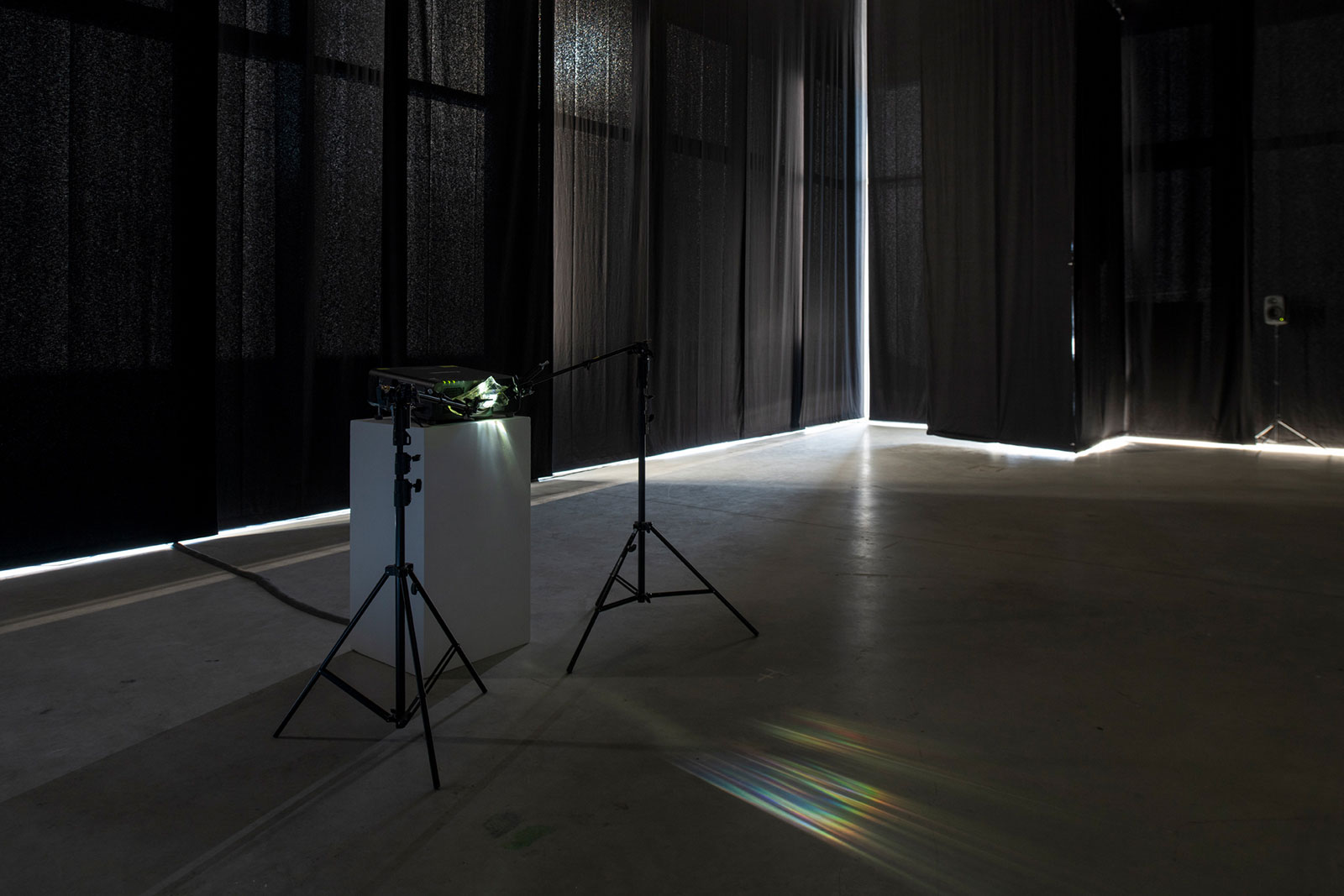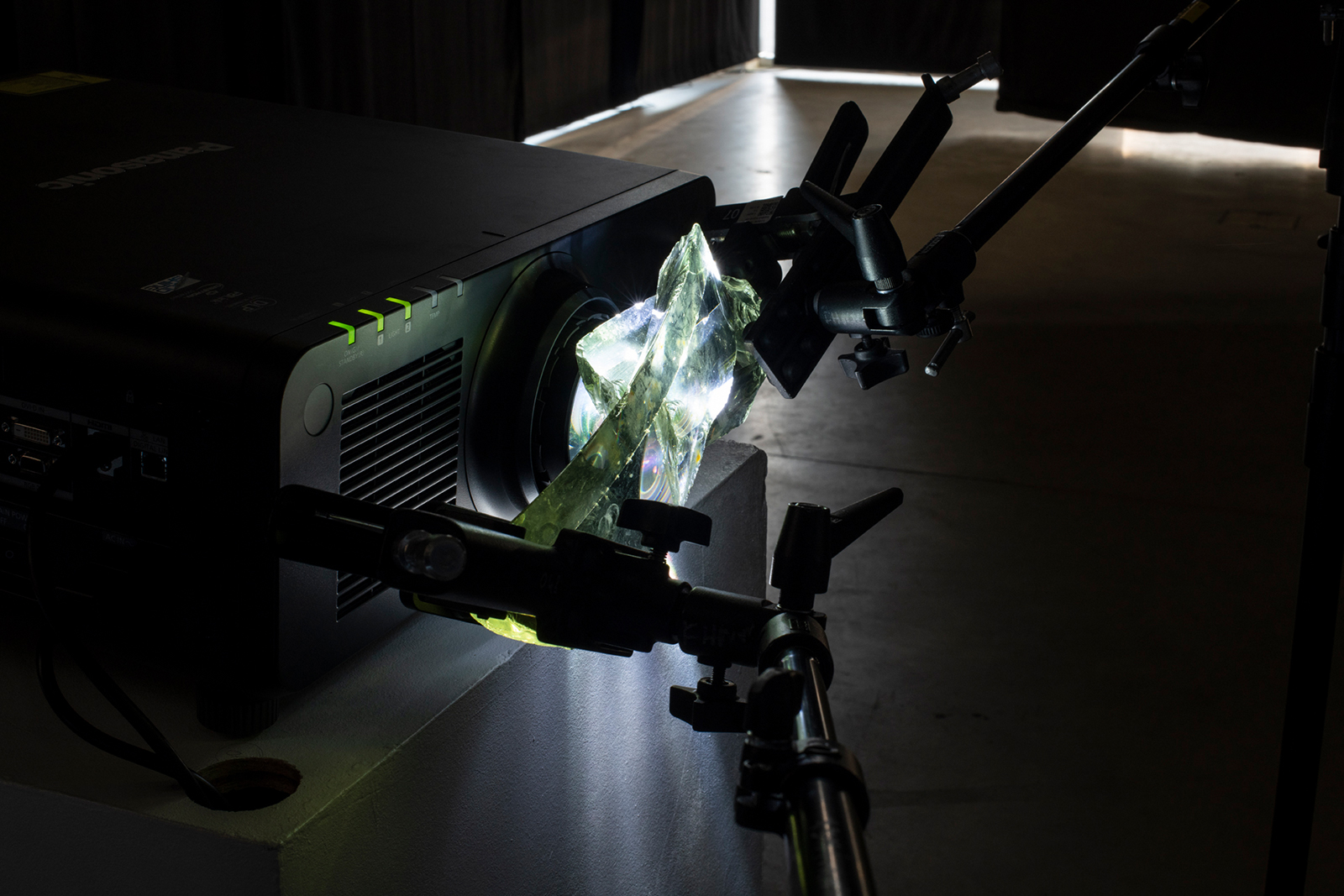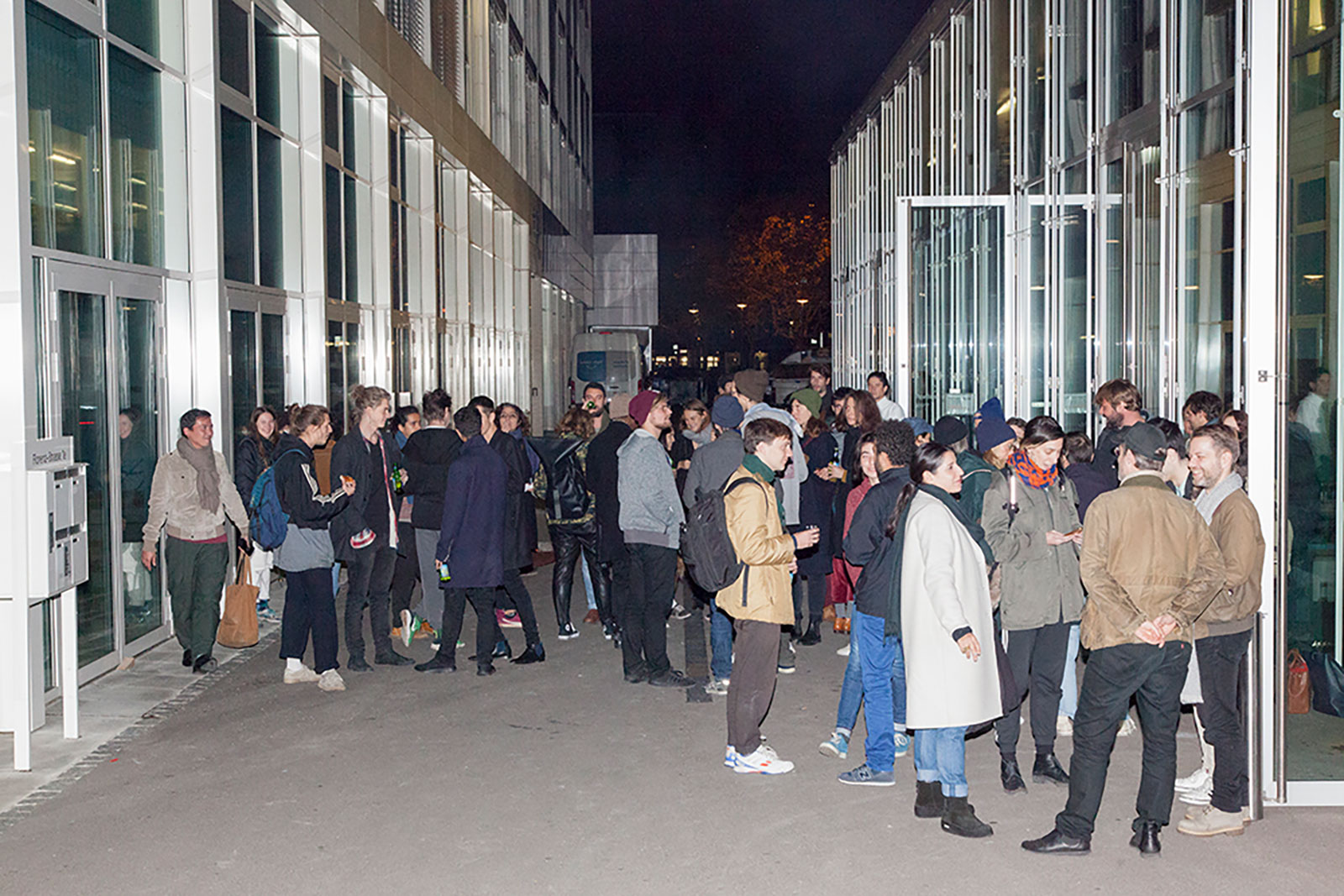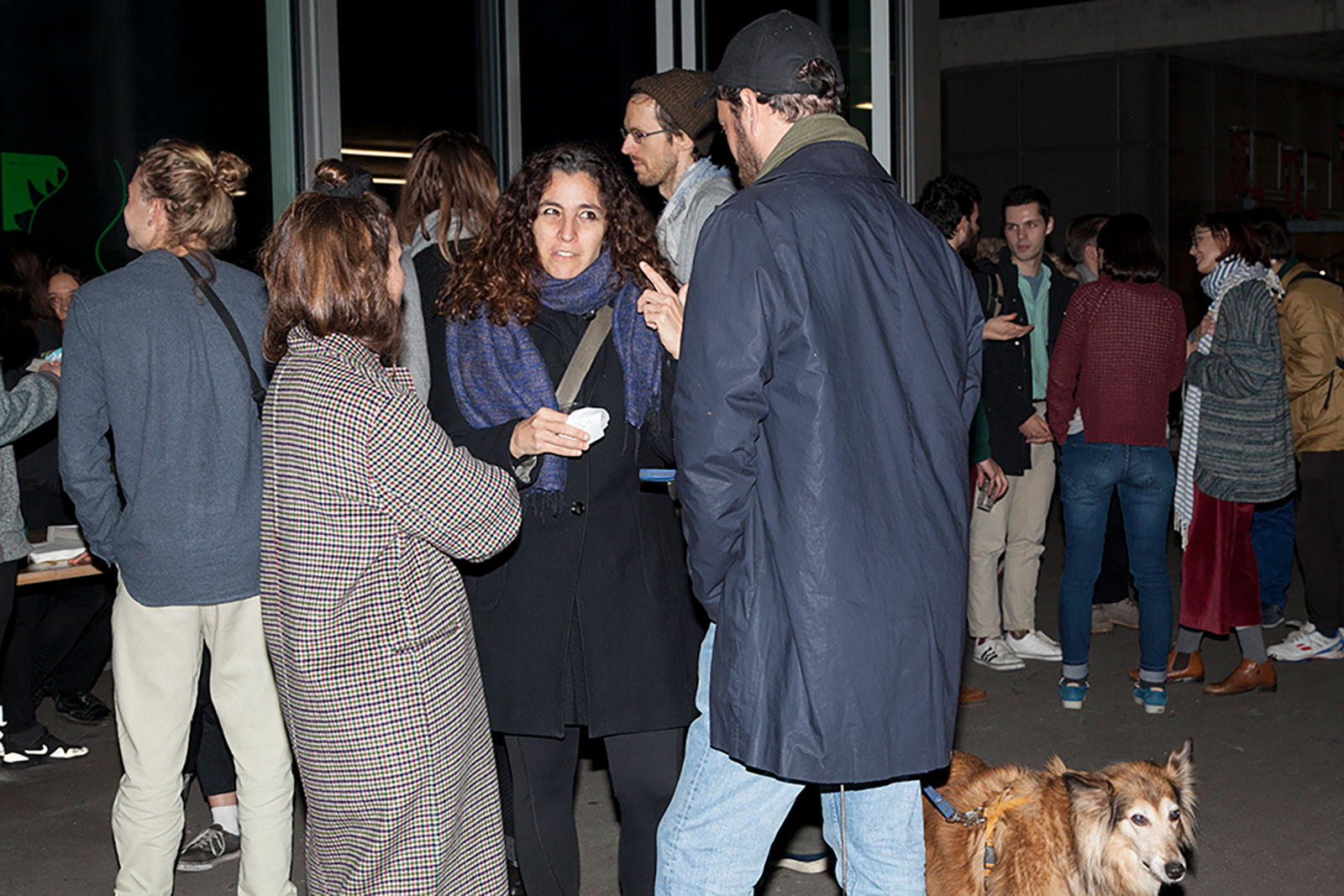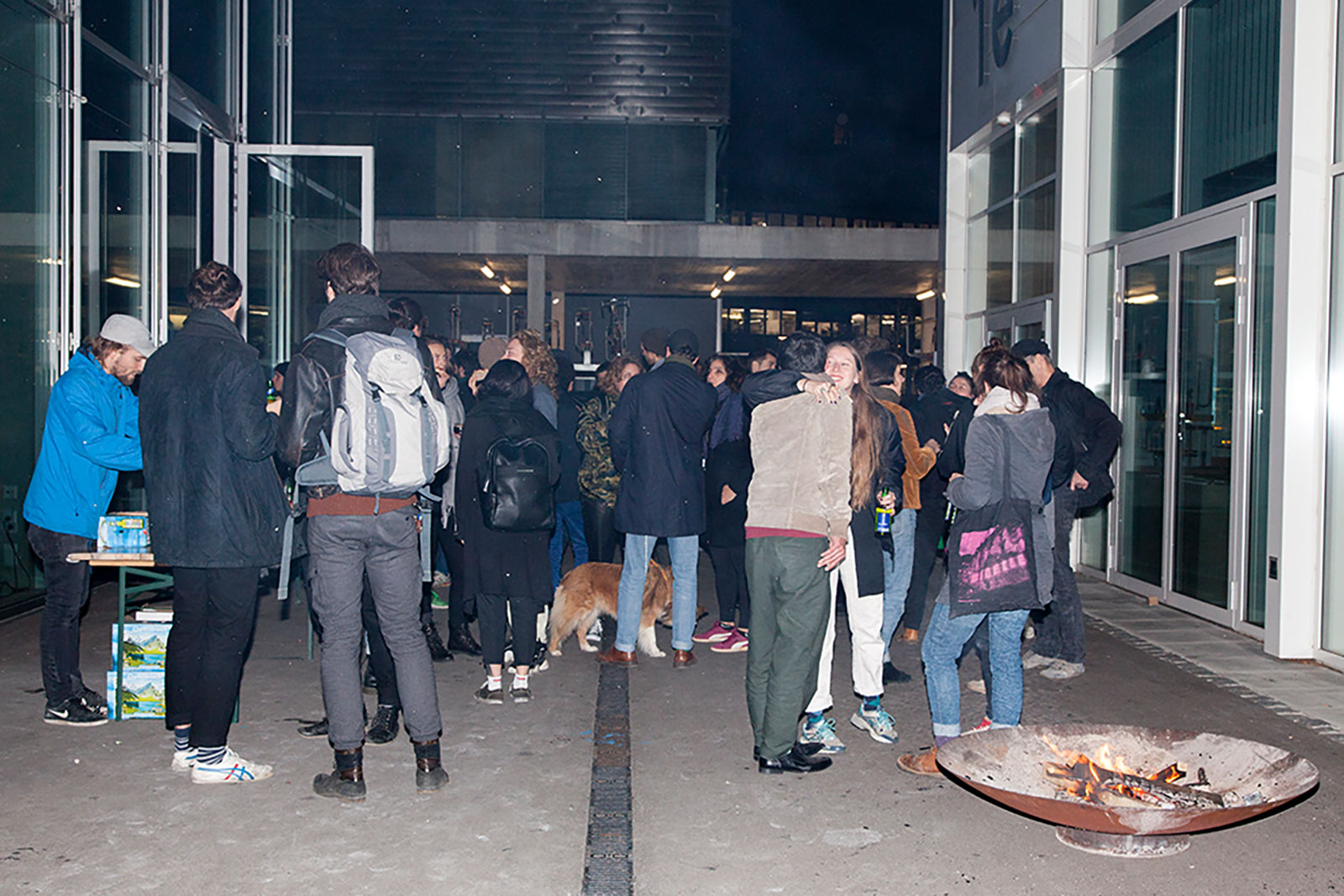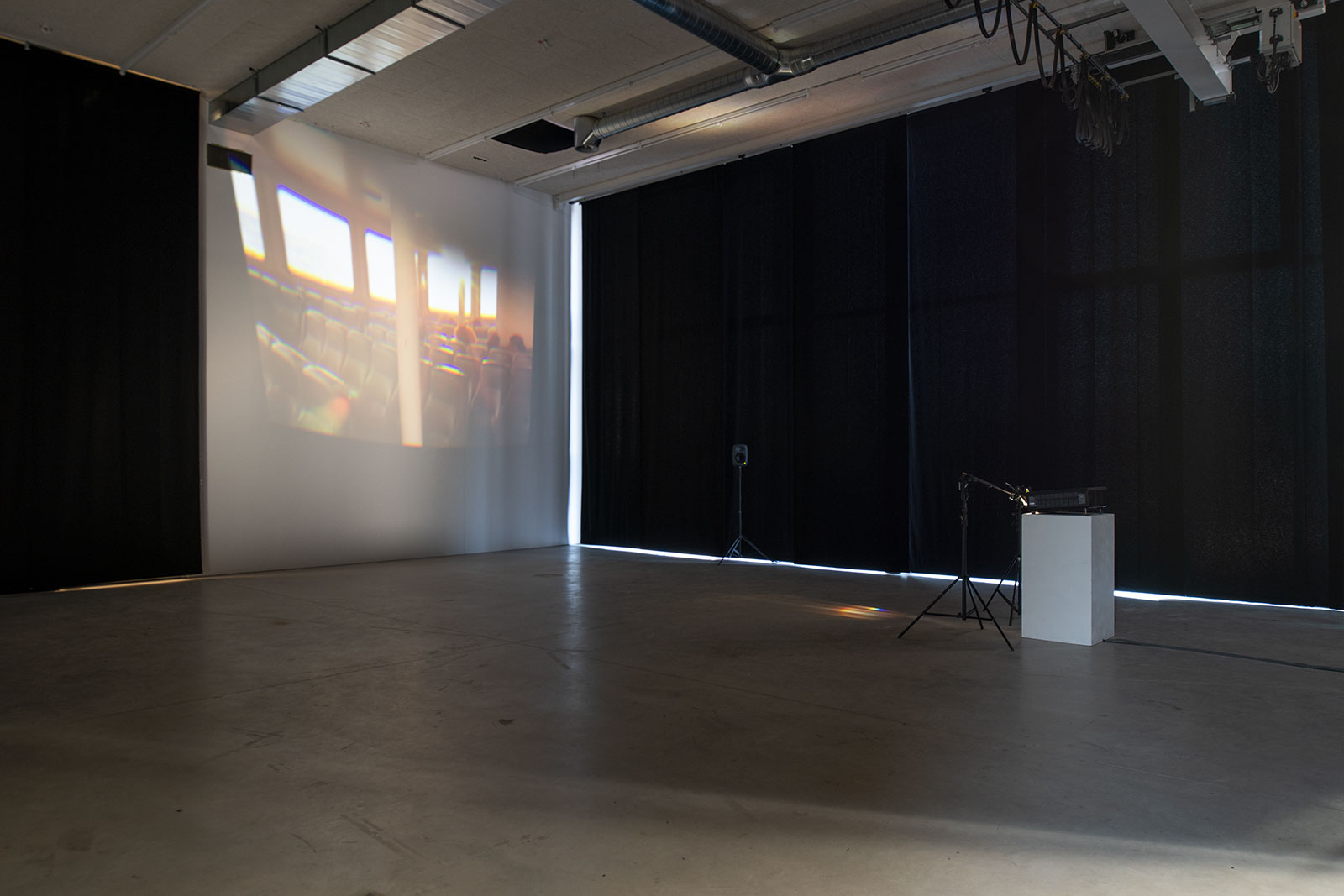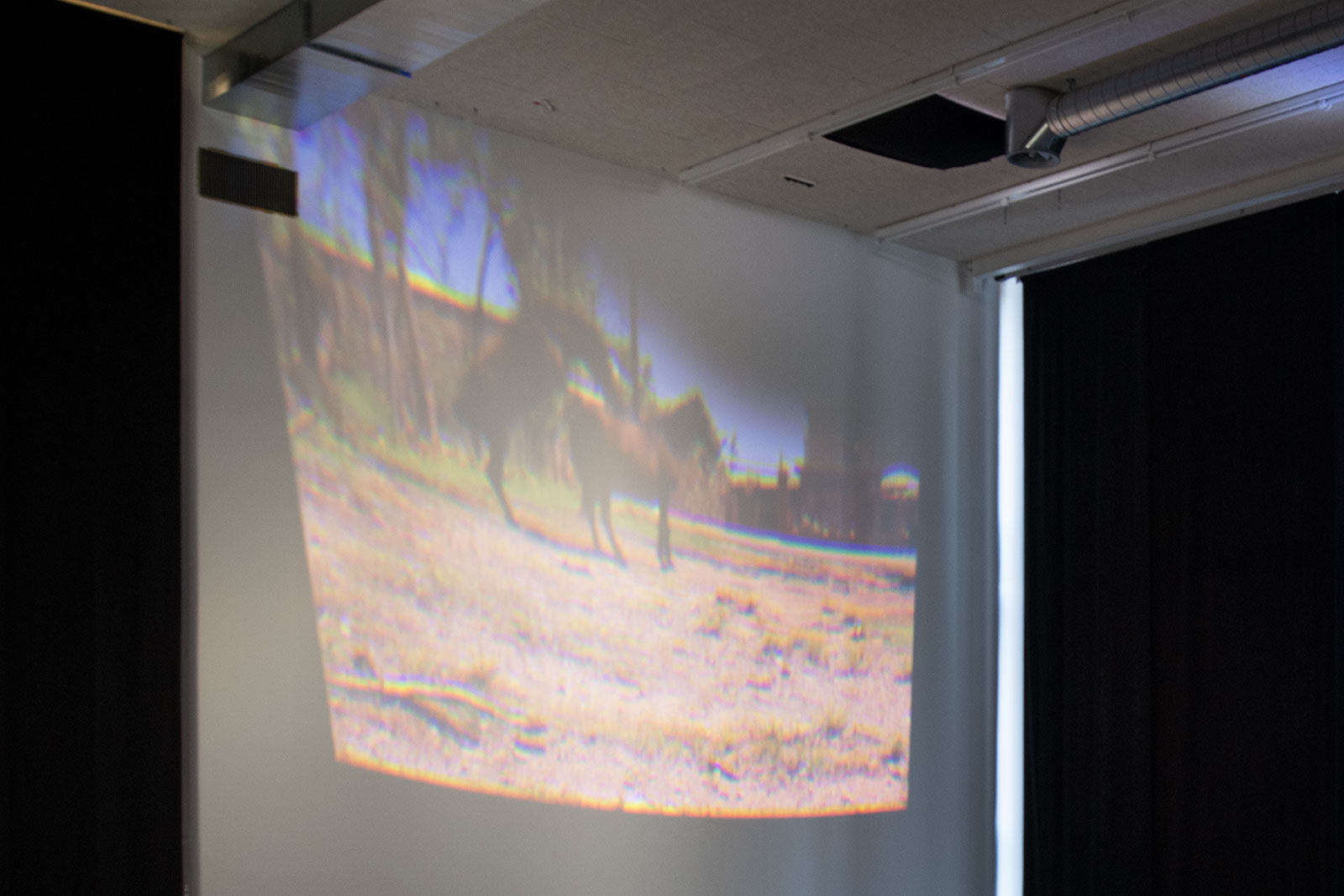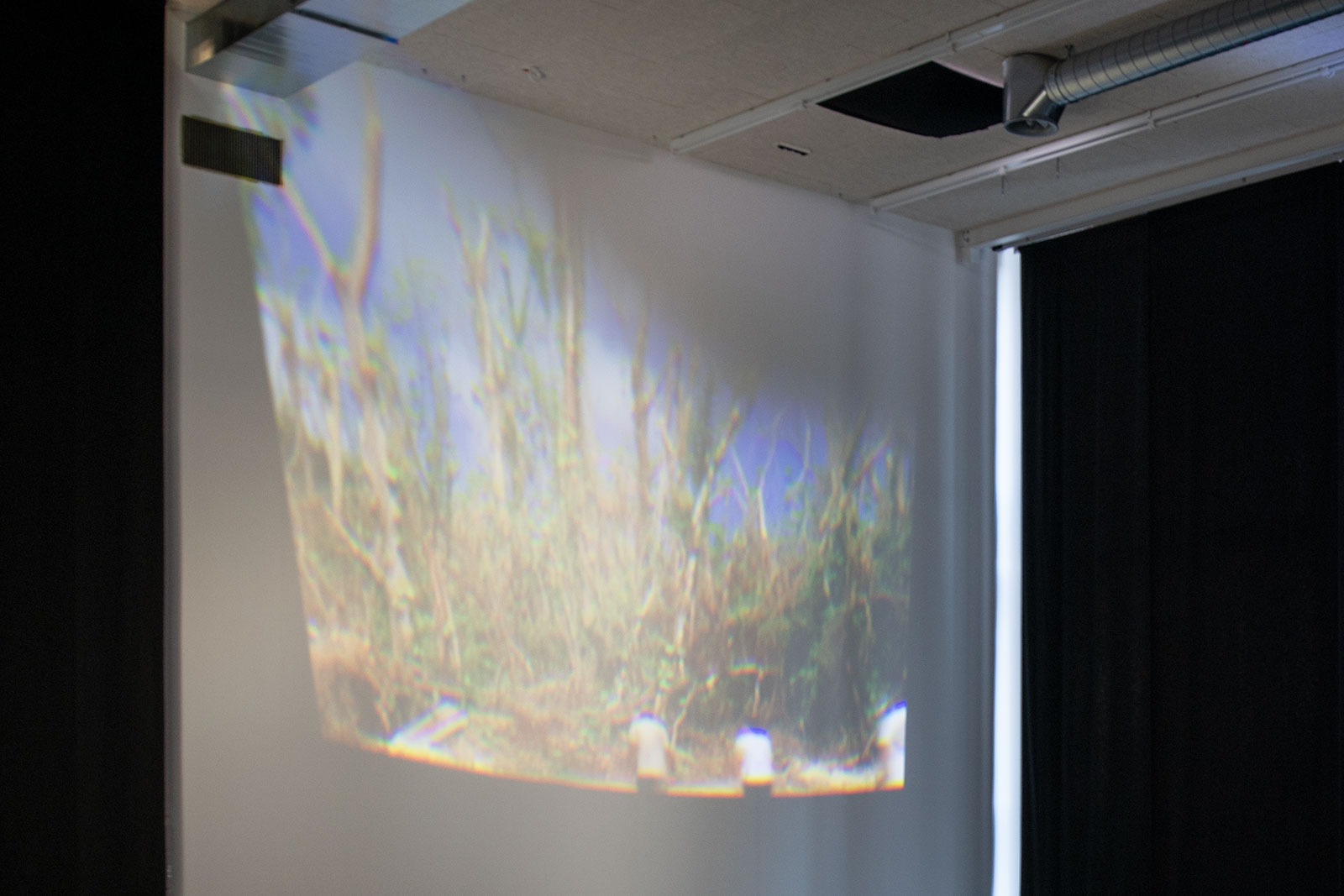The Commissions
Beatriz Santiago Muñoz
Gosila
10 – 25 November, 2018
Opening reception 9 November, 18:00
Curated by Chus Martínez
Curatorial assistance Alice Wilke
Can one capture the weather? The moody skies and foreboding clouds? It seems impossible to depict every particular wind, every drop of water that inhabits the rain, every form of cloud, and, just as importantly, the light that makes observation possible. We only tend to generalize the elements that compose «the weather.» It is a transitory form, abstract, difficult to grasp. It introduces a sempiternal cinematic effect to our senses. The weather is the biggest cinema and cinema would be impossible without it—that sense of looking far into a world in constant change that seems so different and remote from us. Every eye is a lens and every one of us a meteorologist, an observer, consciously or unconsciously, of all the messages embodied in the tongue the light uses to convey a change in the conditions. Is there such a thing as bad weather, from the weather’s point of view? This question may have no answer. We constantly perceive light as a messenger, creating darkness, producing temperature, signaling a pattern that we may recognize as dangerous, as the imminent coming of the atmosphere upon us.
A little bit more than a year ago, on September 20, 2017, one of the most violent storms ever to hit the Caribbean made landfall on the island of Puerto Rico. The storm, the likes of which Puerto Ricans had never experienced, gathered in intensity before tearing through the Dominican Republic and the U.S. Virgin Islands, ending in Puerto Rico. Those who survived the storm-hell were bound to the hell of its aftermath. Food and water shortages were pervasive throughout the island, power was virtually wiped out, hospitals were closed because of extensive damage, and basic services all but collapsed. Beatriz Santiago Muñoz’s last film is not about the hurricane, but it was made through it, through the light that possesses life after a disaster. A light that affects the senses, as the hurricane did, a light that does not «tell» or «show» but instead seems thick, merged with air. Santiago Muñoz’s films have always been observational, and this new work observes history happening through the elements of nature. The storm relates to colonialism, the weather to the actions of blind power in oblivion about the future. The light lightens the injuries, darkness is not the enemy, darkness is another name for intimacy, for shelter...
It is the unchanged minds of humans who are unable to see themselves as one with all forms of life, unable to see that we are not being poisoned, exhausted, and exterminated alone but along with the plants, the animals, the ground, the soil, the stones, the waters. Don’t call the storm a result of climate change. We love to use the word change; it entertains our vanity. Though the experience through this agony of life is not change, but a huge boundary between our actions and all forms of life, between thinking and doing, between our greediness and the conditions that may assure the coexistence of all, here.
The light that will fill the full space of der TANK will be projected through an eight-inch-long piece of Fresnel lens that broke off a lighthouse in Maunabo, Puerto Rico, during the storm. A film made of light, a survival lens from a lighthouse made to capture more oblique light from a distant source, allowing the light to be visible over greater distances, sending a message to the sea, mingling with the sun, with the darkness of the depths, speaking through air the language of the elements. What does the voice of light aim at? It’s difficult to say, but maybe all we can say is recuperation, even love.
The work of Beatriz Santiago Muñoz arises out of long periods of observation and documentation, in which the camera is present as an object with social implications and as an instrument mediating aesthetic thought. Her films frequently start out through research into specific social structures, individuals or events, which she transforms into performance and moving image. Santiago Muñoz’s recent work has been concerned with post-military land, the sensorial unconscious of the anti- colonial movement, and feminist speculative fictions. Recent solo exhibitions include: Safehouse at Sullivan Galleries, Song, Strategy, Sign at the New Museum, A Universe of Fragile Mirrors at the Pérez Art Museum of Miami, MATRULLA, Sala de Arte Público Siqueiros, México City. Recent group exhibitions include: 2017 Whitney Biennial, Prospect 4 New Orleans. Her work is included in public and private collections such as the Solomon Guggenheim Museum, Kadist, Whitney Museum and the Bronx Museum. She received the Creative Capital Visual Art Award (2015) and the Louis Comfort Tiffany Foundation Award (2017). Beatriz Santiago Muñoz lives and works in San Juan.

Production/technology: Patrick Doggweiler, Konrad Sigl. Assistance: Andreas Kalbermatter. Graphic: Ana Domínguez with Natàlia Pàmies. Communication: Eveline Wüthrich



